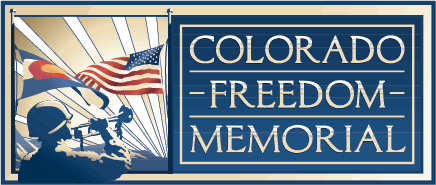CHARLES R. SCOGGIN, 1914-1944 by FRANK H. H. ROBERTS, JR.
Among the many student archaeologists serving in the armed forces of the United States, one of the first to make the supreme sacrifice was 1st Lieutenant Charles R. Scoggin. He was killed in action on Anzio beachhead, Italy, Feb. 2, 1944.
Lieutenant Scoggin, son of Dr. W. J. and Essie (Cartwright) Scoggin, was born July 10, 1914, at Bridgeport, Nebraska. He received his preliminary schooling at Chula Vista, California, and in 1927 moved with his parents to Ovid, Colorado, where he attended high school, graduating in 1931. Because of the depression, he was unable to continue his formal education at that time and in 1933 moved with his family to nearby Julesburg, Colorado. He was employed at Julesburg until the autumn of 1935 when he enrolled in the University of Colorado at Boulder. As it was necessary for him to work his way through college his attendance was irregular and he had not completed the hours requisite to a degree when the tide of world events swept him on to grimmer tasks in the summer of 1942. Had it not been for a deliberate choice, however, between obtaining his degree and completing as much as possible of the manuscript of an archaeological report he probably would have been able to graduate in June of that year. He was married on December 28, 1941, to Charline Knudson of Goodland, Kansas. In addition to her and an infant son, Charles Knudson, whom he never saw, he is survived by his parents, two sisters, three brothers, and his paternal grandmother.
Scoggin became increasingly aware of the fascinating possibilities of archaeology when as a school boy and young man he visited and revisited numerous eastern Colorado and western Nebraska sites in the general Julesburg area gathering surface specimens for his own collection. His desire to know more about the Indians and their cultures, not only of his own immediate district but for the country as a whole, grew apace and he read everything available on the subject. Gathering around him a group of friends with similar interests he instigated the formation of a study group. At this point an interesting case of parallelism, "psychic unity," or plain coincidence developed. In their discussions, Scoggin and his colleagues reached the conclusion that some kind of a general society for amateur archaeologists was desirable. All unknown to them a movement was then under way for the organization of a Society for American Archaeology, an association to serve both professionals and amateurs and to stimulate interest in American archaeology. The latter culminated in December 1934, while the plans of the western group crystallized early in 1935 with the launching of the Society of American Amateur archeologists. There were 27 charter members representing the states of Colorado, Nebraska, and Wyoming. Plans for the new society included the publication of a journal and Vol. I, No. 1, of The Arch, a Monthly Survey of Amateur Archeology appeared in July, the same month that AMERICAN ANTIQUITY, Vol. 1, No. 1, came from the press. The editing was by Scoggin and many of the articles were written by him. The abrupt ending of The Arch-the September issue gave no indication that it was not to continue-resulted from a combination of factors. The membership had not increased as rapidly as anticipated, word about the national organization was spreading and potential members preferring the professional-amateur association joined it instead. Furthermore, Scoggin had made up his mind to go to college that fall. As a consequence, it was necessary to suspend The Arch; the society, without his active leadership, soon became defunct. Scoggin personally, however, liquidated all of the obligations that had been incurred, paying off a little at a time as he worked his way in college.
By the Spring of 1942, he felt that it was only a matter of months before he would be called for service and desired that the record be as complete as possible when he left, even though his personal affairs might suffer thereby. From May 27 to June 15, 1942, with the permission of his draft board, he again served as a temporary ranger at Dinosaur National Monument in order to accompany a party of National Park Service officials on an inspection of sites in Yampa Canyon and along the Green River below the junction of the Yampa. Scoggin entered the army July 22, 1942, through selective service. He received his basic training at Ft. Leonard Wood, Missouri. From there he was sent to the Officers' Candidate School at Ft. Belvoir, Va., and was commissioned a 2nd Lieutenant in the Corps of Engineers on Jan. 29, 1943. He immediately volunteered for assignment to the First Special Service Force at Ft. William Henry Harrison, Montana. This organization, comprising United States and Canadian troops, was undergoing mountain and paratroop training in preparation for commando work. Appropriately enough, as far as Scoggin was concerned, the shoulder flash of this unit was a spearhead and the collar insignia crossed arrows. The Force later practiced amphibious landings at Camp Bradford, Virginia, and then moved to Ft. Ethan Allen, Vermont, for further hardening. In the early summer it went to Amchitka Island in the Aleutians where 20 days and nights were devoted to intensive preparation for the landing on Kiska. Because the enemy had already withdrawn, it remained there only 5 days. Despite the busy time on Amchitka, Scoggin found opportunity to note many middens and village sites and to pick up a representative lot of specimens. While on Kiska he was promoted to 1st Lieutenant. From Kiska the Force re- turned to Ft. Ethan Allen and, in October, embarked for North Africa. From there it went to Italy and joined the Fifth Army, seeing active service in the Cassino sector until withdrawn in January to form a part of the spearhead for the Anzio landings.
(Inserted Text) 1st Lt Scoggin belonged to the First Special Service Force, Canadian Corps of Engineers. This was an elite joint Canadian-American commando unit under the command of the United States 5th Army, which served in the Aleutians, Italy and France. Therefore, we do consider him an American combatant and he is of the US Army. He is officially classified as Killed In Action. His official Home of Record is Sherman County, Kansas but he is obviously one of ours. We should make note that 1st Lt. Scoggins is a recipient of the Congressional Gold Medal, which was awarded to all members of the First Special Service Force by Congress in 2013. Additional awards to the First Special Service Force are the French Croix de Guerre with Silver-Gilt Star and the American military's Distinguished Unit Citation for extraordinary heroism. This force was the precursor to today's American and Canadian special forces units. They were known as the Devil's Brigade, with its individuals known as Black Devils.
Being at the start of an archaeological career, Scoggin leaves little published material. Except for his numerous short articles in The Arch, about which he was extremely and unduly sensitive, his main paper was "Folsom and Nepesta Points" in Vol. V, No. 4, pp. 290-298, of AMERICAN ANTIQUITY. His manuscript "Preliminary Report of the Archeological Field Work of the University of Colorado Museum in Yampa Canyon, 1939-1940" is one of the best ever sent to the Smithsonian Institution in compliance with the permit regulations of the Antiquity Act and might well serve as a model for many professionals. The manuscript "Report of Reconnaissance in Dinosaur National Monument, Season 1941" made to the National Park Service is well done and supplements the previous one. He collaborated with Gordon C. Baldwin and Frank MI. Setzler in preparing the "Yampa and Green River Archeological Survey" of which several typescript copies are on file in Park Service offices.
Scoggin had been a member of the Society for American Archaeology and belonged to the Boulder Chapter, which he served as president 1941-42, of the Colorado Archaeological Society. He was a very capable and promising young man and probably would have made his mark in the field of American archaeology had he been permitted to continue his career. He was a hard and enthusiastic worker whose chief fault, if it can be so called, was so overwhelming an interest in archaeology that it was difficult to hold him to any routine not directly concerned with it. In moments of relaxation, however, he penned excellent little essays and wrote better than passable poetry. Despite a tendency to occasional spells of moodiness, he was a likable chap who will be greatly missed by all who knew him.
Smithsonian Institution Washington, D. C. July, 1944
This content downloaded from
132.174.250.253 on Sun, 22 Nov 2020 18:34:02 UTC
All use subject to https://about.jstor.org/terms


